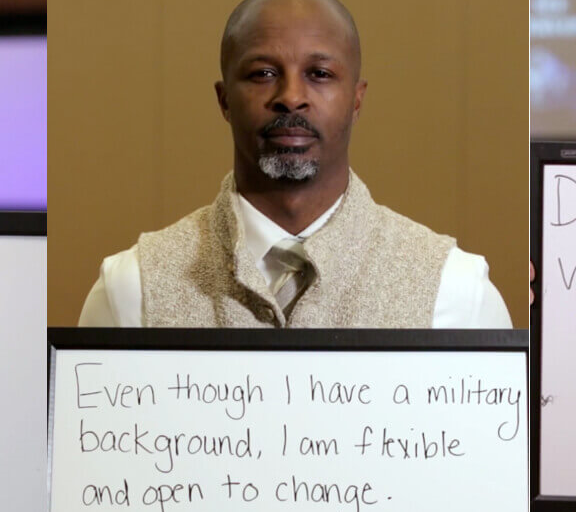Unconscious bias – the impact of microaggressions in workplace

As a strand of unconscious bias, how do microaggressions impair inclusion, diversity and a sense of belonging within the workplace and how can employers prevent it from becoming a cultural norm?
In light of the recent events in the media surrounding racial inequality and injustice in America, the issue of discrimination (particularly around race) has become more prominent around the world, shining an even brighter spotlight on discrimination against marginalised groups.
How this translates into the workplace and how employers work to combat this type of discriminatory behaviour has long since been a drum beat in business and HR strategy. Most employers have Inclusion and Diversity councils and there is a deep awareness of the positive business impact that diversity can bring to the workplace; however, the challenge for employers is how to positively drive change.
In our 2019 article, we explored the topic of unconscious bias and when left untreated, how this can become a limiting factor in a company realising its diverse potential. In this article, we take this subject a step further and explore the related, but lesser acknowledged topic of microaggression.
Understanding microaggressions
According to Professor of Psychology, Derald Wing Sue, Microaggressions are defined as “the everyday verbal, non-verbal, and environmental slights, snubs, or insults, whether intentional or unintentional, which communicate hostile, derogatory, or negative messages to target persons based solely upon their marginalised group membership.” The “micro” in microaggression refers to person-to-person interactions, while “macro” would be systemic and culturally inherent.
Microaggressions can come in a variety of forms and can impact all marginalised groups in society and in the workplace. They are typically rooted in unconscious assumptions and stereotypes and often the preparators of such behaviour are unaware that they have engaged in an exchange that could demean the recipient of the communication.
In an educational video on Microaggressions in Everyday Life, Derald Wing Sue describes a situation where a young, white female is preparing to enter a lift in her office. The doors open to reveal a black male who is already in the lift. She steps back, hesitates and immediately clutches her purse and necklace. The implication in her behaviour is that black people are prone to crime, up to no good and may steal, so it is important for the woman to protect herself.
Other racial examples could include statements of innocent intent such as:
- “You're a credit to your race.”
- “your hair is amazing; can I touch it?” to a black colleague with afro hair.
- "I'm not racist, I have lots of friends of colour."
- “I didn’t expect you to have a British accent” to a colleague of mixed race.
According to Derald Wing Sue, “64% of women experience microaggressions in the workplace” with gender stereotypes leading to other potentially discriminatory assumptions, for example:
- That women need protected or referring to female colleagues with endearing names such as “sweetheart”
- Asking a female colleague to arrange refreshments in a board meeting or assuming that she is there to take minutes
- Referring to a nurse who happens to be a man as a "male nurse."
- Referring to a woman who happens to be a doctor as a "female doctor."
None of these examples appear to be an overt or direct attack, but all of them show that the person speaking has a predetermined and assumptive idea of who the other person should be.
Exploring the unintended consequences on marginalised groups the workplace
While this type of behaviour is often not systemic and often covert in nature, it can be very difficult for employers to identify and manage it. Individual cases may appear small, but the compound effect on the target group has been described as “death by a thousand papercuts” and left unaddressed, the consequences to businesses can be shattering and erode workplace culture. The impact of micro aggressive behaviour can show up in several ways, including:
- Debilitating job seekers who may hesitate to apply for jobs or whose application may not be considered by an employer based on assumptions made about their name or ethnicity
- Impairing diversity as companies may struggle to attract or retain diverse talent
- Mental health issues for employees suffering from a build-up of comments or behaviours
- Workplace engagement may dip as employees lose faith and trust that their employer truly understands and respects their basics needs
- ‘Cookie cutter’ cultures can be created
- Employees may develop an unwillingness to speak up in meetings and take professional risks
- They may lose motivation and sense of purpose or develop self-doubt in their abilities
How to address microaggressions in the workplace?
All employers have an opportunity and responsibility to confront and educate employees on this topic, ensuring that the impact is fully understood and that behaviours are discouraged.
Some have concerns that training on microaggression could be a “step to far,” but for employers who recognise the damaging impact on their people and are ready to take action, there are a few places to start:
- Making unconscious bias, conscious through education and training for employees
- Creating internal discussion forums to understand the opinions and feelings of marginalised employee groups
- Slowing down decision making on hiring and promotion to avoid snap judgements being made
- Anonymising CVs in the talent acquisition process
- Ensuring that interview panels are diverse, and that selection is based on skills and aptitude
- Calling out microaggression in the right way if you see it. This may be a more challenging approach but could involve, in a calm and direct manner, pointing out the potential impact of comment to the perpetrator. It may also be helpful to ask a pointed question to the person who made it, for example, “what did you mean by that comment?”.
Taking steps to positively address and mitigate microaggressions in the workplace requires employers to help their people understand the impact that microaggressions can have. Education and training are a helpful place to start but this should be underpinned by HR policies that position a clear stance against this type of behaviour along with the consequences of engaging in it. With a very fine line between innocence and offence, it is worth spending time learning about this topic and considering on an individual basis how your own thoughts and assumptions could impact others and how to keep yourself on the right side of this balance. Every individual in an organisation is responsible for his/her actions and communications and ensuring that regardless of their intent, should acknowledge that it is often the comments directed with the most innocent intent that, over time, can be the ones that cut the deepest.


